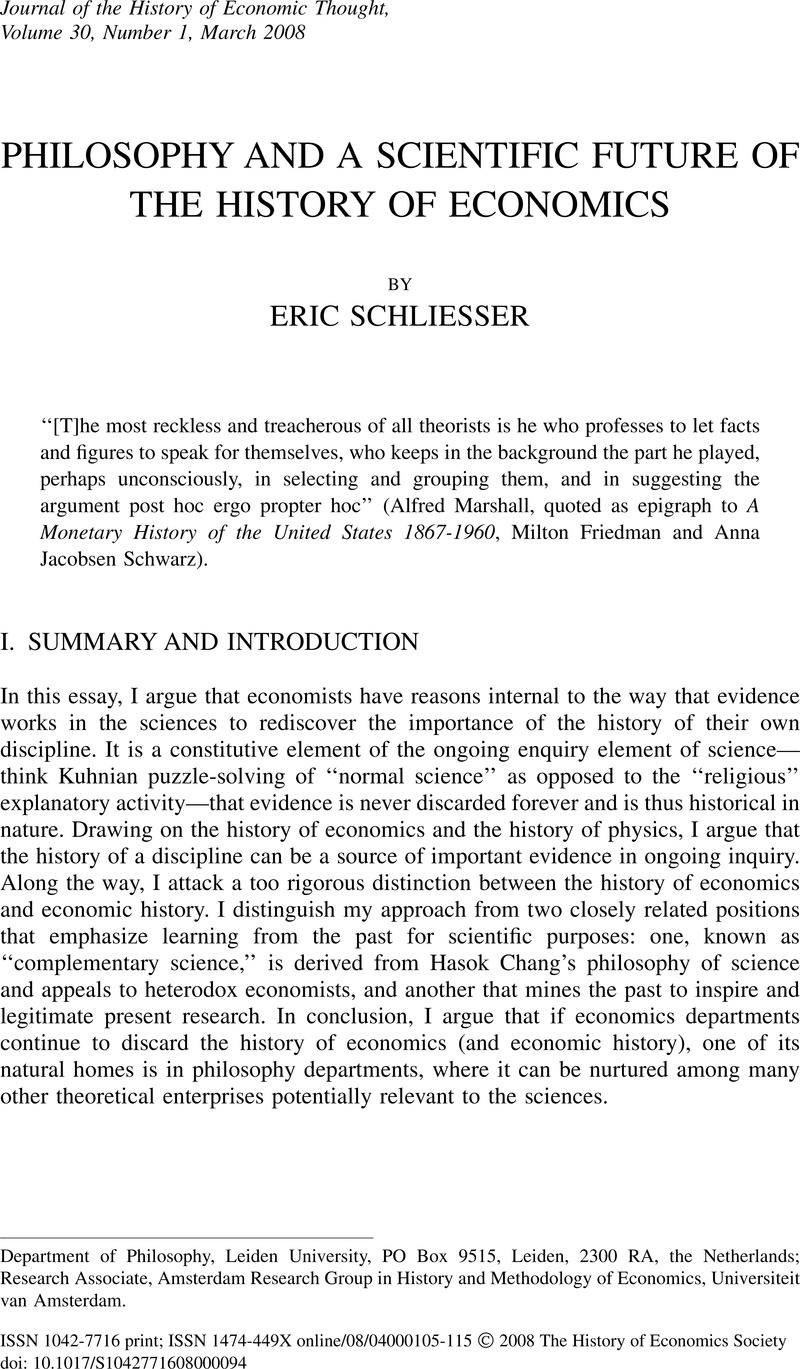Crossref Citations
This article has been cited by the following publications. This list is generated based on data provided by Crossref.
Schliesser, Eric S.
2010.
Inventing Paradigms, Monopoly, Methodology, and Mythology at 'Chicago': Nutter and Stigler.
SSRN Electronic Journal,
Schliesser, Eric
2012.
Inventing paradigms, monopoly, methodology, and mythology at ‘Chicago’: Nutter, Stigler, and Milton Friedman.
Studies in History and Philosophy of Science Part A,
Vol. 43,
Issue. 1,
p.
160.
Lefevere, Merel
and
Schliesser, Eric
2014.
Experts and Consensus in Social Science.
Vol. 50,
Issue. ,
p.
275.
McCaffrey, Matthew
Salerno, Joseph T.
and
Dorobat, Carmen-Elena
2024.
The History of Economic Thought as a Living Laboratory.
SSRN Electronic Journal,
McCaffrey, Matthew C
Salerno, Joseph T
and
Dorobat, Carmen Elena
2025.
The history of economic thought as a living laboratory.
Cambridge Journal of Economics,



